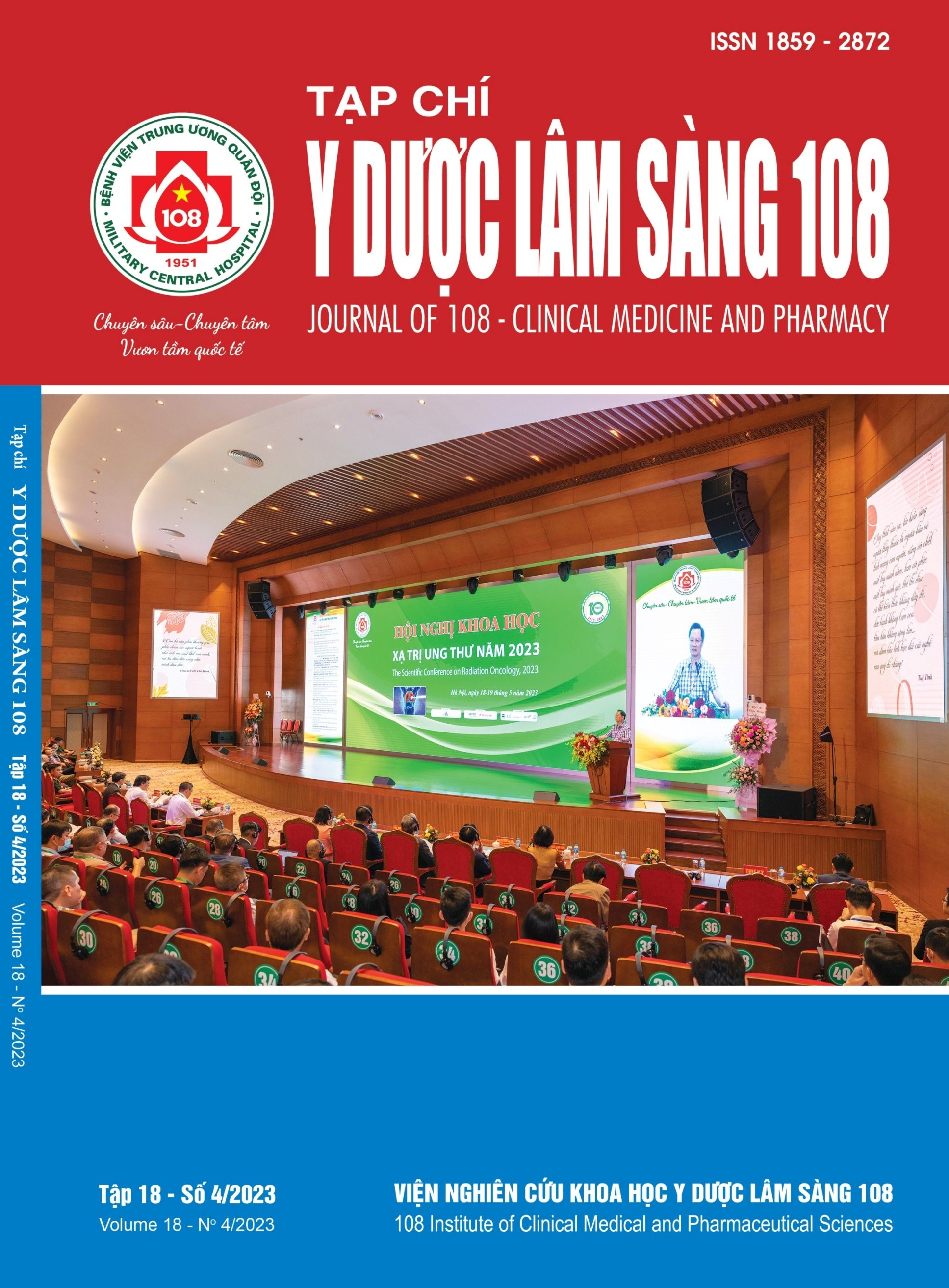Đánh giá tỷ lệ tồn tại lỗ bầu dục trên siêu âm tim qua thực quản ở bệnh nhân nhồi máu não cấp
Main Article Content
Keywords
Tóm tắt
Mục tiêu: Xác định tỷ lệ tồn tại lỗ bầu dục trên siêu âm tim qua thực quản ở các bệnh nhân nhồi máu não cấp. Đối tượng và phương pháp: Nghiên cứu được thực hiện theo phương pháp cắt ngang trên các bệnh nhân nhồi máu não cấp được thực hiện siêu âm tim qua thực quản tại Bệnh viện Thống Nhất từ 6/2019 đến 02/2022. Kết quả: Có tổng cộng 400 bệnh nhân nhồi máu não cấp thỏa các tiêu chuẩn chọn bệnh và được đưa vào nghiên cứu. Độ tuổi trung bình của dân số nghiên cứu là 65,9 ± 12,1 tuổi, trong đó có 286 bệnh nhân (71,5%) ≥ 60 tuổi và có 247 bệnh nhân (61,8%) nam giới. Tỷ lệ tồn tại lỗ bầu dục trong nghiên cứu là 27 bệnh nhân (6,7%). Không có sự khác biệt về các đặc điểm tuổi, giới tính, bệnh lý nội khoa, đặc điểm siêu âm tim qua thành ngực và thực quản, đặc điểm tổn thương trên cộng hưởng từ sọ não giữa hai nhóm tồn tại lỗ bầu dục và không tồn tại lỗ bầu dục. Kết luận: Chúng tôi ghi nhận có 6,7% bệnh nhân nhồi máu não cấp tồn tại lỗ bầu dục được phát hiện trên siêu âm tim qua thực quản.
Article Details
Các tài liệu tham khảo
2. Bayar N, Arslan Ş, Çağırcı G, Erkal Z, Üreyen ÇM, Çay S et al (2015) Assessment of morphology of patent foramen ovale with transesophageal echocardiography in symptomatic and asymptomatic patients. Journal of Stroke and Cerebrovascular Diseases 24(6): 1282-1286.
3. Overell J, Bone I, Lees K (2000) Interatrial septal abnormalities and stroke: A meta-analysis of case-control studies. Neurology 55(8): 1172-1179.
4. Silvestry FE, Cohen MS, Armsby LB, Burkule NJ, Fleishman CE, Hijazi ZM et al (2015) Guidelines for the echocardiographic assessment of atrial septal defect and patent foramen ovale: from the American Society of Echocardiography and Society for Cardiac Angiography and Interventions. Journal of the American Society of Echocardiography 28(8): 910-958.
5. Strong K, Mathers C, Bonita R (2007) Preventing stroke: Saving lives around the world. The Lancet Neurology 6(2): 182-187.
6. Furlan AJ, Reisman M, Massaro J, Mauri L, Adams H, Albers GW et al (2012) Closure or medical therapy for cryptogenic stroke with patent foramen ovale. New England Journal of Medicine. 366(11): 991-999.
7. Lee PH, Song J-K, Kim JS, Heo R, Lee S, Kim DH et al (2018) Cryptogenic stroke and high-risk patent foramen ovale: The DEFENSE-PFO trial. Journal of the American College of Cardiology 71(20): 2335-2342.
8. Mas JL, Derumeaux G, Guillon B, Massardier E, Hosseini H, Mechtouff L et al (2017) Patent foramen ovale closure or anticoagulation vs. antiplatelets after stroke. New England Journal of Medicine 377(11): 1011-1021.
9. Søndergaard L, Kasner SE, Rhodes JF, Andersen G, Iversen HK, Nielsen-Kudsk JE et al (2017) Patent foramen ovale closure or antiplatelet therapy for cryptogenic stroke. New England Journal of Medicine 377(11): 1033-1042.
10. Maffè S, Dellavesa P, Zenone F, Paino AM, Paffoni P, Perucca A et al (2010) Transthoracic second harmonic two-and three-dimensional echocardiography for detection of patent foramen ovale. European Journal of Echocardiography. 11(1): 57-63.
 ISSN: 1859 - 2872
ISSN: 1859 - 2872
